Godzilla (1954)
Directed by: Ishirô Honda
Written by: Shigeru Kayama, Takeo Murata
Starring: Akihiko Hirata, Akira Takarada, Momoko Kôchi, Takashi Shimura
HCF REWIND NO.95. GODZILLA AKA GOJIRA, GODZILLA KING OF THE MONSTERS [Japan 1954]
AVAILABLE ON DVD AND BLU RAY
RUNNING TIME: 96 min/ 86 min [US version]
FEATURED MONSTERS: GODZILLA
REVIEWED BY: Dr Lenera, Official HCF Critic
The image most non-fans have of a Godzilla film is of a campy, silly, juvenile adventure with bad special effects and badder dubbing. Well, the dubbing only exists if you watch the English language versions, and as for the rest, well, some of the films may be like that, especially the ones made from the late 1960’s and 70’s which still seem to be the most widely seen Godzilla movies, but to me are all the more fun for it, while other films are more adult and serious much like the James Bond series, with special effects, at least in the early films, that are actually very impressive for the time. Compare the effects, in both quality and diversity, in an early Godzilla film to those in any similar monster movie coming out of the US at the time, and you’ll see what I mean. I reckon it’s people’s adversity to the ‘suitmation’ technique, having the creature played by a man in a rubber suit, that is a major factor to the widespread derision, but I just admire the filmmaker’s refusal to change the way Godzilla is portrayed over the decades, and actually a creature done this way can move more naturally than any CGI or stop-motion creation.
If you’re a Godzilla fan, you’ll need no encouragement to join me as I go through the whole series, plus the other Toho studios monster movies, and analyse each film critically while still I hope showing my love for these weird and wonderful motion pictures which thrilled me as a kid even before I ever actually saw one and just read about in books. I’m even, when I get to it, going to check out the 1998 American Godzilla, a film which I actually walked out of because I hated it so much! If you’re not a Godzilla fan, you never know, you may be encouraged to dispel your prejudices and try one of these crazy and thematically fascinating films out. Maybe….even if the best it does is make you feel like a kid again, something which I personally feel is something we should all do from time to time!
A flash of light destroys a fishing ship and the rescue craft sent to investigate. The few survivors escape to nearby Odo Island, where the natives mention a sea monster called Godzilla. Reporters arrive, and with them shop captain Hideto Ogata and his girlfriend Emiko Yamane. That night, a storm arrives and something else comes with it, bringing death and destruction. Investigators sent to the island, led by Dr Kyohei Yamane, Emiko’s father, see a huge reptilian creature. Yamane returns to Tokyo to present his findings and concludes that Godzilla was unleashed by a nuclear explosion. He believes Godzilla should be studied but, as the monster heads for Japan, saner minds seem to prevail, though depth charges fail to kill the monster. Meanwhile, Emiko goes to break off her arranged engagement to a Dr. Daisuke Serizawa, because of her love for Hideto, and Serizawa tells her about his secret experiment….
The very first Godzilla film is the second greatest giant monster movie after the 1933 version of King Kong, and that may sound like a ridiculous statement to make, but I’m sticking by it. It’s not at all campy, not at all silly, and definitely not juvenile. It always seems to surprise those who have seen stuff like Destroy All Monsters and thinks all Godzilla films are like that. It’s an unrelentingly grim picture, an anguished cry of pain from a nation which suffered the most destructive use of a military weapon in history. I’m talking of course about the atomic bombs that were dropped on Hiroshima and Nagasaki at the end of World War 2, a necessity from the point of view of America as Japan just would not surrender and a full-scale invasion would have cost more lives and gone on for ages, but something that scarred the country considerably. This is evoked all throughout Godzilla, so much so that it’s not as entertaining as your usual Godzilla film, the deadly serious way in which the story is handled resulting in a film that is a little slow and heavy for the kids, but a masterpiece it still is, emotive, intelligent and frightening. You can’t say that about Godzilla Vs Mothra and Godzilla Vs Mechagodzilla, as wildly entertaining as they are. Godzilla artistically is in a different class to them.
The idea for the film came about when producer Tomoyuki Tanaka was flying home to Tokyo from Jakarta, where plans for a Japanese-Indonesian production titled In The Shadow Of Honour had fallen apart. He looked out into the sea and, inspired by both the recent film The Beast From 20 00 Fathoms [where an early Ray Harryhausen creature terrorises New York] and a real incident where a tuna trawler The Lucky Dragon strayed close to where an H-bomb test had occurred and the crew had radiation poisoning, decided to make a film where a huge monster attacked Japan. Shigeru Kayama’s short story was expanded by Takeo Murata and Ishiro Honda, an upcoming filmmaker who had travelled through decimated Hiroshima and asked specifically to direct the film, and the script went through several alterations. Originally Yamane was a very mad scientist, the love triangle did not exist, Godzilla was seen properly almost at the beginning and was part whale, part gorilla. Initially stop-motion was going to be used for Godzilla but this would have been costly and time consuming for special effects maestro Eiji Tsuburaya. A prestige production for Toho, it was a huge hit both domestically and in the west, where two years later a re-edited version called Godzilla King Of The Monsters hit cinemas. More on this interesting and not at all bad version later.
The actual Japanese name for Godzilla is gojira, supposedly inspired by a large burly stagehand who worked at Toho studios who was called that name, it being a cross between the words gorilla and kujira the Japanese name for whale. I’m going to call him Godzilla though because that is how he is best known outside of Japan. The build up to his first proper appearance in Godzilla is clever and suspenseful, so much so that I still cheer when he finally appears. First of all the opening scene has sailors on a ship blinded by a bright light before the ship bursts into flames, a scene that definitely references The Lucky Dragon. Then a second ship has the same thing happen, but this time we hear a loud roar. Soon after, on Odo Island, a hurricane blows through the native village and the waves rise, and something is seen, but not by us, something that tramples through the village. Then, a little later on, a head peaks over a hilltop to roar at the humans, a moment whose effectiveness is negated a little by the employment of a puppet that doesn’t resemble the suit much. Even after this, we don’t see Godzilla fully until he begins his assault on Tokyo over half way through the film.
Godzilla has quite a few talky passages where people debate what to do about the monster, and the introduction of a love triangle initially seems a bit unnecessary. How many creature features are burdened with dull romantic interest, especially in the 50’s? The genius of Godzilla’s screenplay is that it ends up making the three characters, and their relationships to each other, vitally important to the story. Serizawa, who seems to represent the ‘old’ Japan [there’s even a reference to Germany], is really the hero of the piece. He may lose the girl to his younger rival, but he never really ‘had’ her anyway as she never loved him. His tortured soul-searching as he decides whether to use his deadly invention or not, an invention which he doesn’t want known and used, is the moral heart of the story, and his suicide at the end is prompted as much by his fears that his knowledge of how to make such a dangerous device could be negative for mankind than his acceptance of Emiko being with Hidata. The relevance of many of the issues raised by Godzilla is striking even today, while direct references to the atomic bomb, such as a conversation about shelters, a scene in a hospital where children are being checked for radiation, and a heartbreaking moment where a woman tells her child they will join her father soon, are chilling.
Godzilla’s lengthy rampage through Tokyo is still startling. It’s much longer than the usual kaiju [Japanese word for monster] city stomp, but more than that it’s actually frightening, with a genuine attempt at realism. Most later rampages would ritualise the destruction and not show the fear it would cause and effect on humans, but here we actually see people getting crushed and burnt by Godzilla’s ray. Except for an odd bit where a crashing fire engine appears to be badly animated by stop-motion and a laughable moment where wire-supported rockets are seen to hit a sky backdrop, technically the sequence is quite an achievement. Having most of Godzilla’s scenes take place at night makes the matte work virtually seamless at times and, at least in this film, Godzilla certainly looks and moves like a living creature. The underwater scene of his destruction is done in a most interesting way. Instead of a fast, action-packed climax, it’s a slow, graceful ballet of a sequence, set superbly to a piece of music which subtly changes and actually seems to mourn Godzilla. The scene may disappoint some, but it’s part of what makes Godzilla unique.
Composer Akira Ifikube deserves much credit for the realisation of Godzilla. As well as writing the sparse score, which musically evokes Godzilla through instruments playing in the lower registers and also provides offers haunting requiems and that awfully catchy [if rather jaunty for this particular film] fast-tempo march theme that would later virtually become ‘Godzilla’s theme’, he created Godzilla’s roar by rubbing a resin-covered leather glove along the loosened strings of a double bass, and his footsteps by striking an amplifier box. His footsteps are used inconsistently, sometimes heard, even occasionally when you shouldn’t hear them, and sometimes not. The rushed shooting of Godzilla is evident in some clumsy edits and to be honest the performances of the three main leads, the two male ones of which went on to almost become fixtures in Toho science-fiction movies, are not great and easily outshone by Takashi Shimura as Dr Yamani who you like even if he wants this destructive menace kept alive. He has a really touching moment when, upset that the authorities want to destroy Godzilla, he quietly tells his daughter to leave him alone as he sits alone in a darkened room. It’s a perfect example of this intelligent, thoughtful classic that still also manages to be a cracking monster movie. The new one certainly has its work cut out!
Rating: 









When Godzilla reached American, and indeed most other, cinema screens in 1956 it was in a significantly different form. To make the film more digestible for US audiences, it was decided to shorten the original film considerably and insert an American star. Much of the lengthy debating was shortened and references to the atomic bomb removed, while Raymond Burr’s newly shot scenes, sometimes with stand-ins representing Japanese characters in the film, were cut in to the Japanese footage, which often plays in its original language with no subtitles. Sometimes Burr’s character, a news reporter called Steve Martin, narrates the proceedings including a new opening which shows the devastated Tokyo [footage from later on] before flashing back to before the devastation. I think the alterations were certainly instrumental in making it a hit in the West as in the East and even today Godzilla King Of The Monsters works quite well. Burr’s gloomy narration is especially effective. Sadly some later Godzilla films were almost ruined by their American edits, which may not have been as extensive as those made for Godzilla but were often done with little thought.

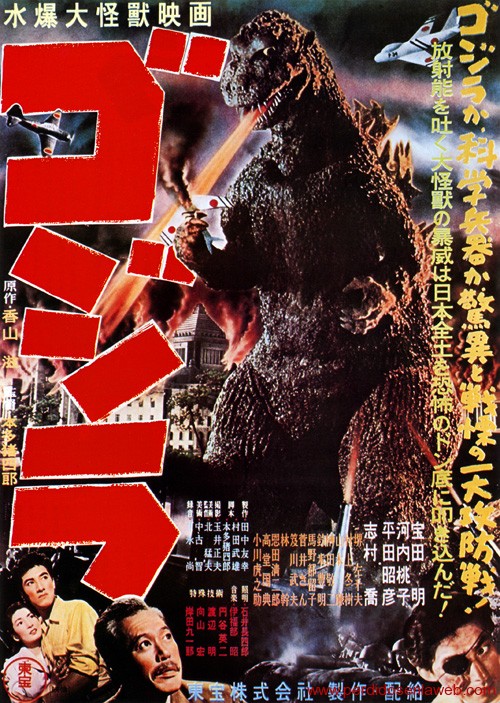

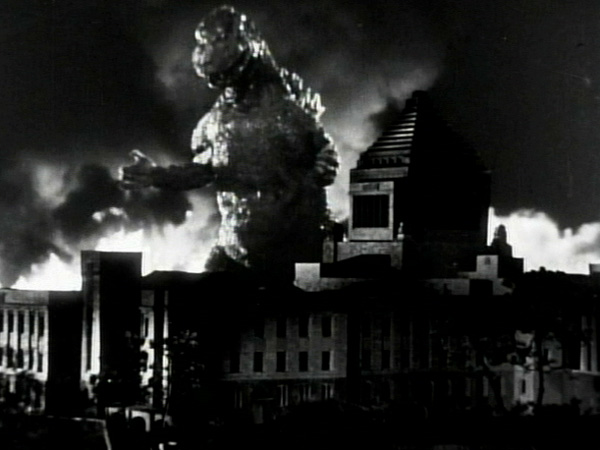
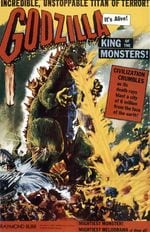

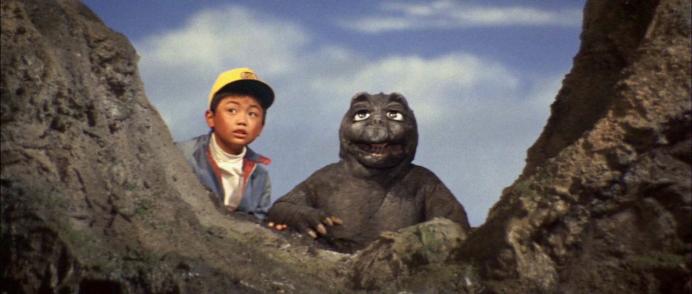

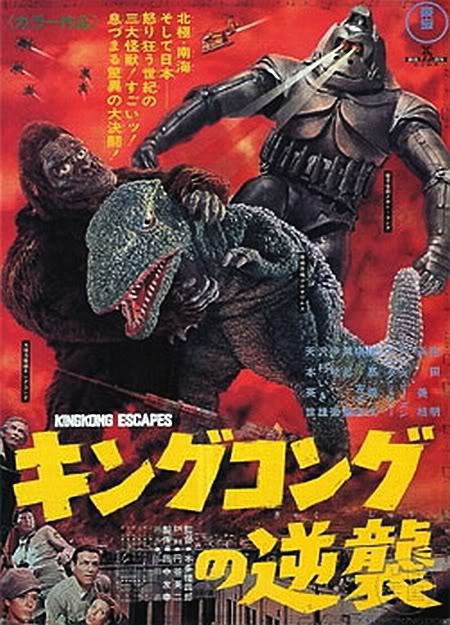
Be the first to comment